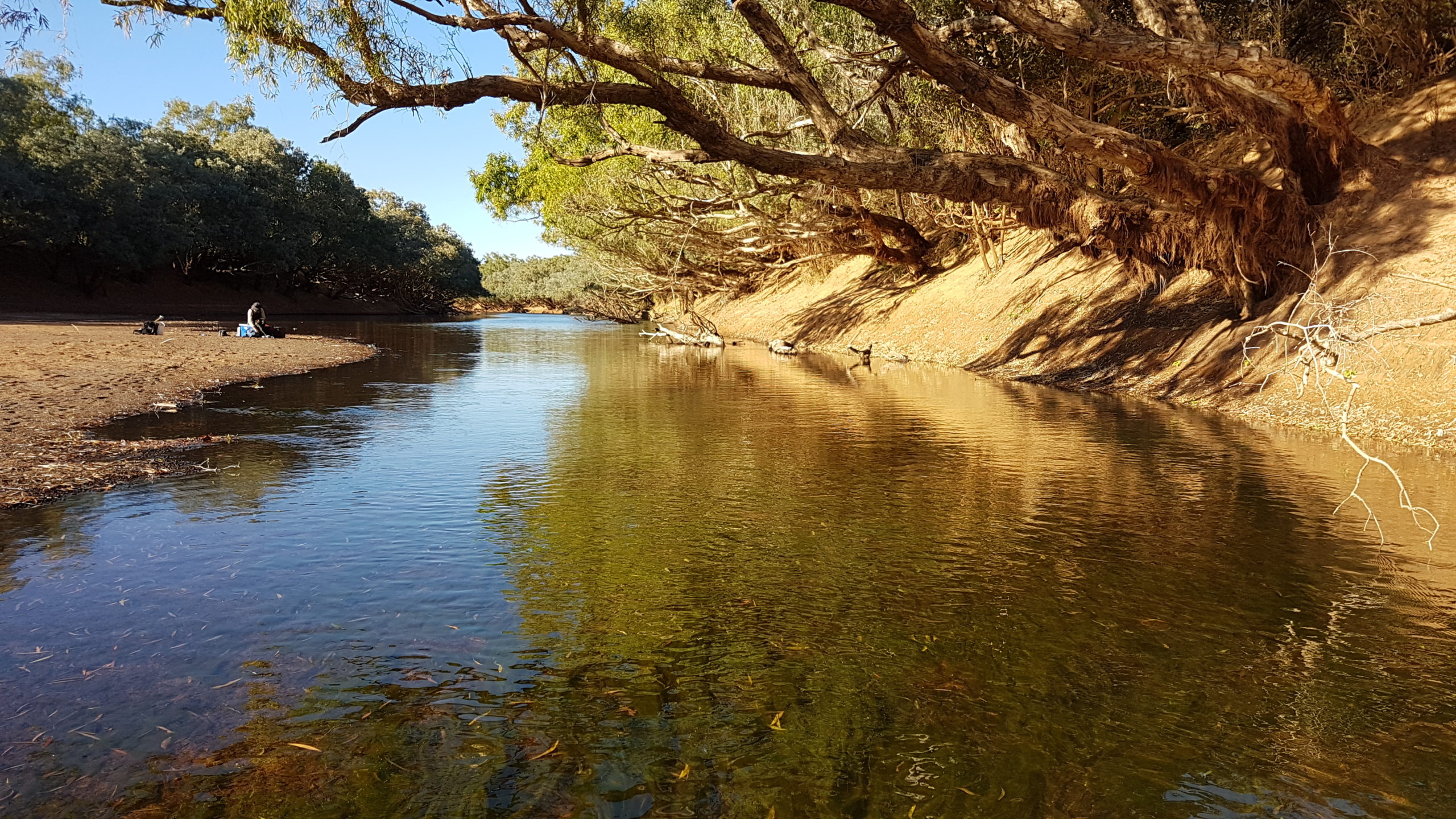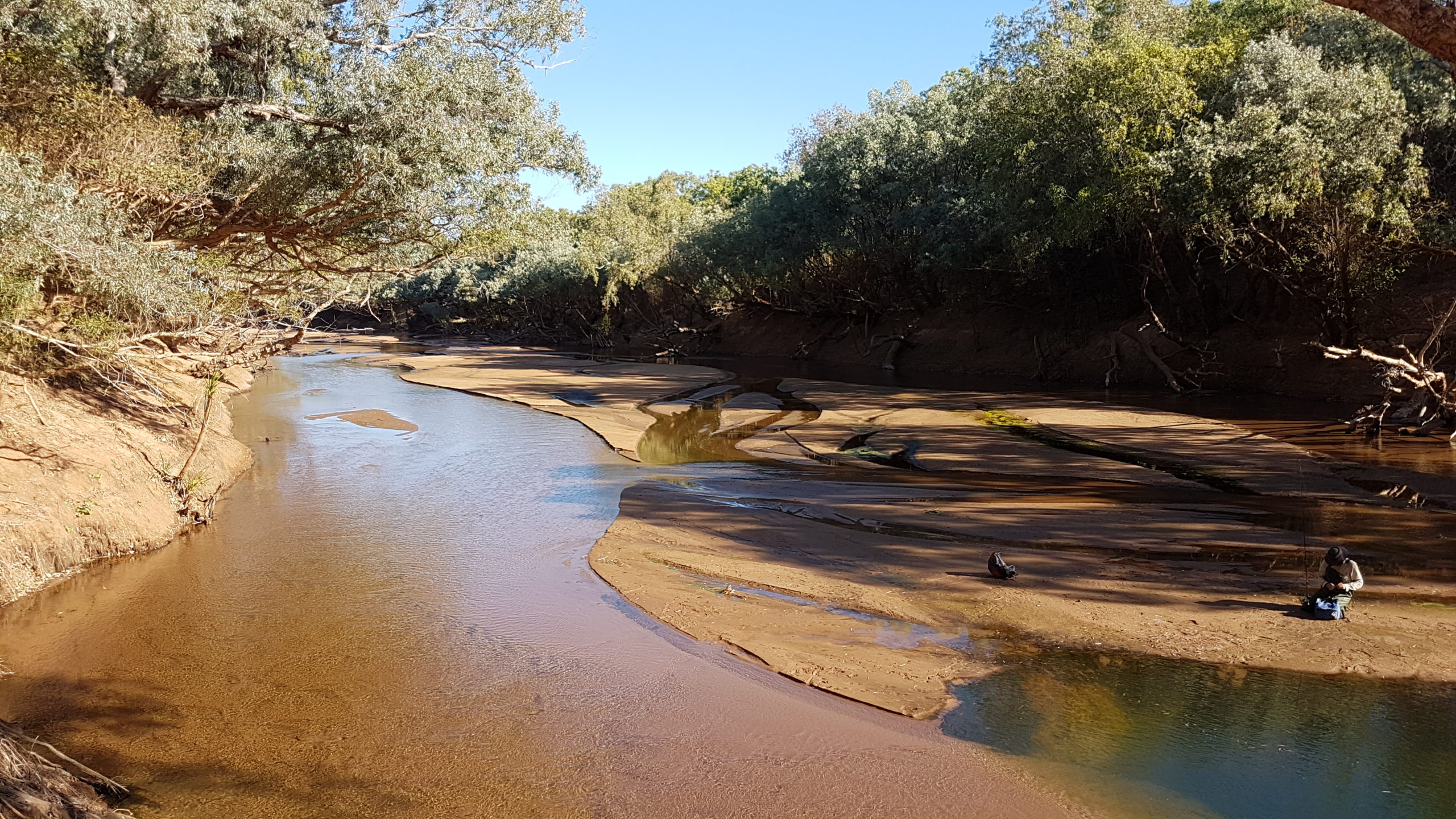27 May 2020
New Hub research, published in Hydrobiologia and led by Dr Ryan Burrows of Griffith University, has found that algal biofilms thrive in the shallow, warm and light-filled runs and riffles found along the Kimberley’s Fitzroy River in the dry season. They are particularly productive in areas where nitrogen-rich groundwater upwells and mixes with river water.

Western Australia’s Fitzroy River, photo Ryan Burrows.
With water allocation planning for the Fitzroy River catchment currently underway, it’s essential that we understand the conditions that promote the productivity of algal biofilms, and hence the river’s food webs, all the way from microscopic algae through to metre-long barramundi. The research found that water regulation and extraction that either reduces dry-season flows along the river or lowers groundwater levels beneath the river’s main channel are likely to reduce algal production in places identified as biofilm ‘hotspots’.
The research is part of a larger Hub project investigating the environmental water needs of the Fitzroy River, led by Professor Michael Douglas of The University of Western Australia.

Assessing riffles in the Fitzroy River, photo Ryan Burrows.
Want to know more about the Resilient Landscapes Hub's activities and our research into practical solutions to environmental problems? Stay informed about activities, research, publications, events and more through the Hub newsletter.